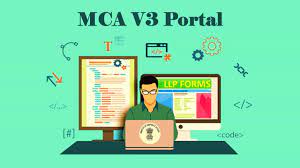New Traffic Fines and Rules
According to the city’s traffic police laws as well as the Indian Motor Vehicle Act, breaking, transgressing, or disregarding any of these restrictions is a serious offence. The implementation of these traffic laws (decrees, rules, codes of practice, and acts) can significantly reduce the number of road accidents. These laws are enforced by issuing challans in the names of lawbreakers, motivating them to absorb the rules. Penalties and legal wrangling are always powerful deterrents. The following is a symptomatic list of all possible crimes and their related penalties: Objectives of the Motor Vehicles (Amendment) Bill Establish a constructive planning framework for road transportation Implement stricter rules for traffic violators To make mandatory for the automobile sector to replace defective vehicles that cause harm to the environment or the individual Ensure safety through a new traffic management system Supporting good samaritans by not making liable to any criminal prosecution Develop a platform to promote new vehicle technology Providing location tracking services for all public service transports Improvements in Motor Vehicles (Amendment) Bill, 2019 Compensation for road accident victims Compulsory Insurance for all motor vehicles Good Samaritans Recall the vehicles if defective National Transportation Policy Road Safety Board Offences and Penalties Taxi Aggregators and Regulate app-based taxi-hailing services for smooth rider experience List of Traffic Violations & Fines in India 2024 Traffic rules violated Fine amount Drunk driving or driving under influence of intoxicated items Rs.10,000 and/or 6 months in prison, Rs.15,000 and/or 2 years in prison in case of repetition of violation Overloading pillion riders Rs.2,000 plus disqualification of licence and/or community service for three months Over speeding Rs.1,000 for LMV, Rs.2,000 for MMV Dangerous driving First Offense: Rs.1,000 to Rs.5,000, licence seizure, and/or 6 months to 1 year in prison Second Offense: Rs.10,000, licence seizure, and up to 2 yeaRs in prison Driving without licence Rs.5,000 Driving without insurance Rs.2,000 and/or 3 months in prison, community service, Rs.4,000 in case of repetition of violation Signal jumping Rs.1,000 to Rs.5,000, licence seizure, and/or 6 months to 1 year in prison Riding without helmet Rs.1,000 plus licence scrapping for three months Riding without permit Up to Rs.10,000 and/or up to 6 months imprisonment Juvenile driving Rs.25,000 with three years of imprisonment, cancellation of registration of vehicle for 1 year, and ineligibility to avail a driving licence until 25 years of age Offences Related to Documents Offences Penalty Driving without carrying a valid driving licence Rs.5,000 Unauthorised driving of a vehicle without carrying a valid driving licence Rs.5,000 General Offense First Time: Rs.500 Second Time: Rs.1,500 Not carrying the required documents as specified in Motor Vehicle Act while driving Rs.500 Driving without a valid auto insurance. Rs.2,000 and/or 3 months in prison, community service, Rs.4,000 in case of repetition of violation Driving without a valid permit Rs.10,000* and/or up to 6 months of prison and community service Travelling without ticket Rs.500 Driving after being disqualified Rs.10,000 Power of Officers towards impounding documents Suspension of driving license under Section 183, 184, 185, 189, 190, 194C, 194D, and 194E* Violating licensing conditions (Aggregators) Rs.25,000 to Rs.1 lakh Driving without Valid Vehicle Fitness Certificate. Up to Rs.5,000 and no less than Rs.2,000 Vehicle without RC Book (Registration Certificate) Rs.2,000 * Changes made in September – 2019 Offences Related to Driving Offences Penalty Violation of rules of road regulation Rs.500* Offences made by juveniles (aged below 18 years) Rs.25,000 with three years of imprisonment, cancellation of registration of vehicle for 1 year, and ineligibility to avail a driving licence until 25 years of age Not obeying the orders of the authorities Rs.2,000 Over speeding of vehicle Rs.1,000 for Light Motor Vehicles (LMVs); Rs.2,000 for Medium Passenger Vehicles (MPVs) Oversize vehicles Rs.5,000 Letting an unlicensed individual to drive Rs.1,000 Driving two wheelers without wearing a helmet Rs.1,000 and disqualification of driving license for 3 months* Driving without fastening the seat belts Rs.1,000 Rough/ Reckless/ Negligent Driving Rs.1,000 Dangerous driving Rs.5,000 Racing or speeding on public roads Rs.5,000 Not making way for emergency vehicles Rs.10,000 Not driving in the proper lane. Court Challan Driving in the centre and not keeping to left side of the road. Rs.100 Driving against One Way. Rs.100 Reversing without due caution and care. Rs.100 Taking “U” turn during forbidden hours. Rs.100 Not taking adequate care while taking a “Turn”. Rs.100 Failing to slow down at intersection/ junction. Rs.100 Not carrying on left of traffic island. Rs.100 Carrying people on Footboard. Rs.100 Carrying people to the point that it causes inconvenience (be it for rear-view visibility or gear shifting) to the driver. Rs.100 Tripling on bikes/ two wheelers. Rs.100 Driving on Footpath. Rs.100 Stopping at pedestrian from crossing or crossing a Stop Line (Zebra Cross). Rs.100 * Changes made in September – 2019 Offences Related to Road Marking Offences Penalty Violating the Yellow Line. Rs.100 Violating the Stop Line. Rs.100 Violating the Mandatory Signs. Rs.100 Offences Related to Vehicle Number Plates Offences Penalty Use of Offensive Number Plate for vehicle used in driving. Rs.100 Displaying ‘Applied For’. Rs. 4,500 Offences Related to Vehicle Lights Offences Penalty Improper use of headlights and/ or taillight for your vehicle used in driving. Rs.100 Using a High Beam when it is not needed. Rs.100 Offences Related to Horn Offences Penalty/Sentence Driving without a Horn. Rs.100 Improper usage of horn when you drive. Rs.100 Offences Related to Traffic Police Offences Penalty/Sentence Disobeying a Traffic Police Officer in uniform. Rs.100 Driving against Police Signal. Rs.100 Not complying with the manual Traffic Signal. Rs.100 Offences Related to Traffic Signal Offences Penalty/Sentence Not complying with the Traffic signal / Sign Board. Rs.100 Failing to give the appropriate Signal. Rs.100 Signal Jumping. Rs.100 Offences Related to Speed & Overtaking Offences Penalty/Sentence Driving above the permitted Speed Limits by the Traffic Police. Up to Rs.1,000 Abetment for Going over the Speed Limit. Rs.300 Overtaking hazardously. Rs.100 Failing to deliberate way to sanction Overtaking. Rs.100 Overtaking from the Wrong Side. Rs.100 Other Offences Related to Driving Offences Penalty/Sentence Purposely disobeying Lawful Directions. Rs.500 Driving
New Traffic Fines and Rules Read More »









